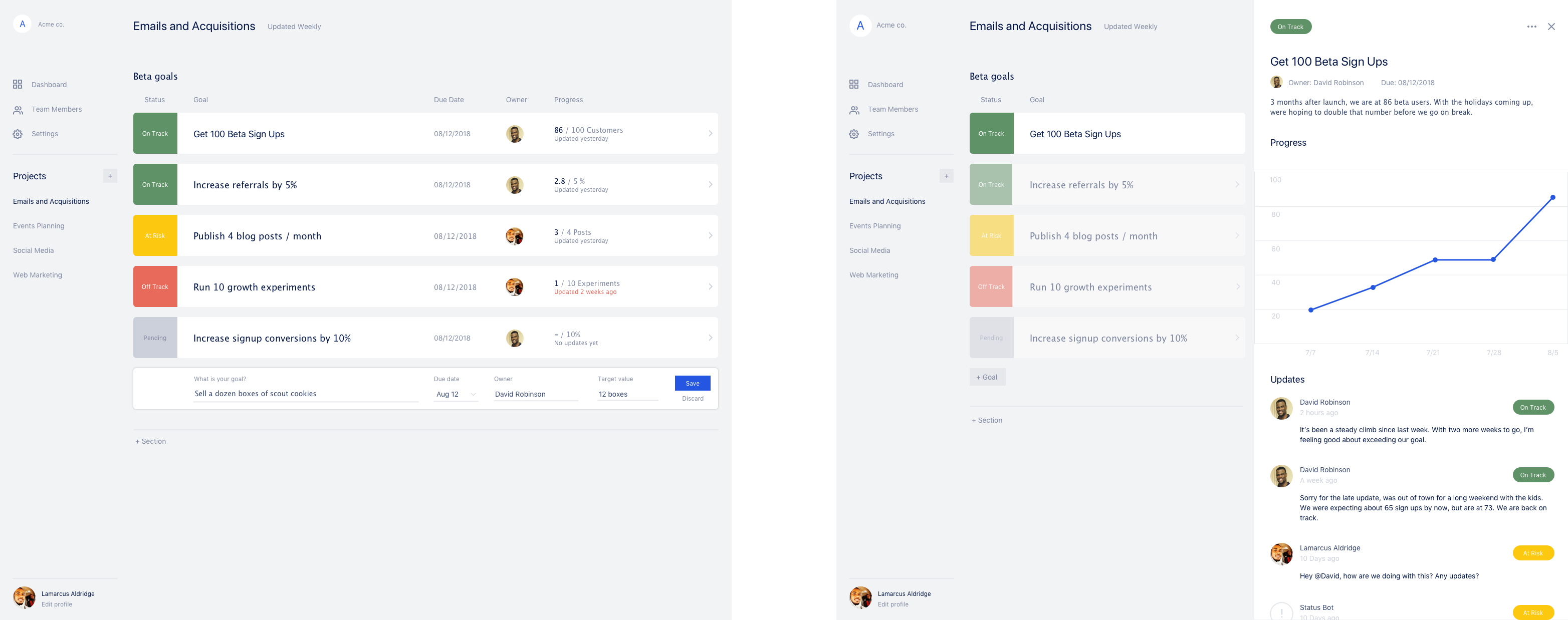Building in the open: Designing simple, intuitive project updates
See what we're doing to keep project updates simple, easy and powerful. Read about the core principles guiding our designs.

Previous post: lo-fi overview of the platform.
The previous post of this series looked at some of the experience that we're working on for Squadlytics. I hope that it gave you a good understanding of the direction we're taking, and today I'm excited to show you the first designs and share the fundamental principles guiding them.
Project management tools don't track projects
Our first iteration on Squadlytics allowed us to have many discussions with customers, team leads, and individual contributors about how they keep track of things.
The biggest takeaway was that it's faster and more reliable to ask personal feedback rather than looking at metrics to understand the state of a project. The main reason for that is the growing complexity of projects. Of course, it is expected to include data in any assessment, but we're still far more effective than machines to quickly digest information from multiple sources into a simple on track, off track response.
We then dug into the tools that people are using today, and it was surprising to see that project management solutions like Jira, Asana, Trello are not often used to track long-running initiatives. More often than not, teams are using spreadsheets and docs that they update on a weekly basis. A key reason for that is that most project management tools are expecting short-lived tasks, and are designed for a low granularity. That's great to check day-by-day execution on features, but it introduces a lot of complexity when you need to communicate progress to a wide range of people in different parts of an organization.
That's why a lot of teams today are using spreadsheets, docs, wikis (or emails) to share status updates. It's a simpler format that can be read by anyone regardless of their role (development, marketing, sales, support...). It's also often easier to provide a summary view, which is necessary when you have a lot of projects running in parallel.
So these are the things that we're keeping in mind while building our platform. We want to give you the best of both worlds: simple updates and powerful workflows.
Our core principles
Three core principles are guiding our user experience:
- Keep it simple, stupid: The best way to manage complex systems is to keep them simple. Same goes for statuses on projects - the less there is, the easier it is to share updates and get feedback.
- Make it intuitive: Don't reinvent the wheel, use existing codes and patterns. Minimizing context switching is also about not changing behaviors.
- Peaceful: Don't add to the stress when things are not in great shape. Users should feel at ease to share bad news as well as the good news.
Our designs

The two pictures above show you the current iteration for the project page.
- Goals should be easy to see, and their status needs to be visible.
- Editing needs to be straightforward. Adding, changing and removing goals should be a familiar experience.
- More details can be seen if required, but they do not clutter the space.
This is still a work in progress but we believe in sharing things early to make sure that we're going in the right direction.
Give us your feedback, sign up for the beta
Let us know what you think and if you have any questions by adding comments to this blog.
You can also sign up for the beta to get early access via our website at https://squadlytics.com.

